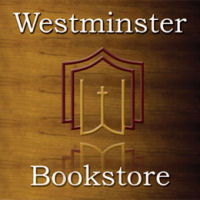
Even though it was not their intention, when Andreas Kostenberger and Michael Kruger (hereafeter K/K) penned The Heresy of Orthodoxy, I really think they ended up writing one of the finest defenses of the Protestant view of the formation of the Canon of Scripture that I've ever read. Now that I've begun with that bombast, I want to take a step back, look at what the authors were attempting to do in this book, and then to show you why it is that I think they did such a fabulous job of arguing their case.
A little bit of oversimplified background is in order. Most of our readers will have a cursory understanding of who Bart Ehrman is. If you don't, just go to Google and you'll be quickly brought up to speed. Perhaps lesser known in popular Christian culture is the fact that Ehrman was really a student of Walter Bauer who himself suggested that early Christianity was shockingly diverse and that in the beginning of the church there never was really one "christianity," per se. He suggested that only later, once the Church emerged as the global religious superpower, did they concoct a conspiracy to cover up the early diversity in the church.
Anyway, there's more to this crazy conspiracy theory, but let me just suggest that the convenient thing about conspiracy theories is that they are not falsifiable. Whenever someone holds to a conspiracy theory, they will always see evidence against their theory as reinforcing the reality of the conspiracy.
The book's full title is The Heresy of Orthodoxy: How Contemporary Culture's Fascination with Diversity Has Reshaped Our Understanding of Early Christianity, and in essence, the book is addressing itself the the cultural problems related to the widespread interest in the works of Bart Ehrman - and by extension, Walter Bauer. After reading the whole book, I'm tempted to summarize the book by saying that the book is all about debunking the Bauer-Ehrman thesis... except that the authors say exactly the opposite in their concluding appeal:
[D]ebunking the Bauer-Ehrman thesis was not the main purpose of this book...The intriguing question is why the Bauer-Ehrman thesis commands paradigmatic stature when it has been so soundly discredited in the past...The reason is rather that Bauer's thesis...resonates profoundly with the intellectual and cultural climate in the West at the beginning of the twenty-first century.I really want to dispense with the Ehrman talk for the rest of the review. This is because, while K/K spend the entire book demonstrating why the Bauer-Ehrman thesis has no basis in reality, what the book really does so brilliantly is demonstrate for the reader the truth about the canon so that we can spot the counterfeits when they cross our paths. In some ways, Ehrman's challenges to the historic, Biblical faith simply give K/K a structure around which to build the book's beautiful edifice. This book is more than a polemic against a liberal New Testament scholar. It is a crash course in the canon, textual transmission, and manuscripts.
The book is organized into 3 main parts. Part One is devoted to the subject of pluralism and the origin of the canon. Part Two addresses the formation of the canon itself. Finally, Part Three clears up issues of textual criticism, the work of scribes, and the transmission of the text.
In Part One, K/K argue that if you allow the evidence of New Testament authors and early church fathers, then one finds a profound unity- especially in the first 150 years or so of the church.
[H]eresy arose after orthodoxy and did not command the degree of influence in the late first and early second century that Ehrman and others claim...instead, heresy grew parasitically our of an already established orthodoxy. (p 66-67)They argue carefully and methodically for this conclusion, but I'll never get through this review if I show in detail how they do it.
Part Two of the book was the most beneficial to me, primarily because I had half believed the old Catholic argument that we wouldn't have the canon if it weren't for the Catholic church's pronouncement of what was Scripture and what wasn't. K/K, however, argue that the canon was already in use almost as soon as it was written. They demonstrate, by citing numerous early church fathers (who radically predate the fourth century date given by Bauer-Ehrman for the closure of the canon) that the
idea of a New Testament canon was not something developed in the second century (or later) when the church was faced with pressing needs, but rather it was something that was handed down to and inherited by the early church from the beginning. It was the foundation for the church, not the consequence of the church. The idea of canon, therefore, does not belong formally in church history, but is more accurately understood as a central plank in redemptive history. (p 117)For myself, this was very helpful. After I digested what they were saying, the pieces fell into place and I grasped the reality that the church only received the canon - it did not create it.
As an aside, one of the chief benefits I derived from this book was not simply that the authors made interesting arguments, but that I've never seen all of these arguments so conveniently packed into one place - and so fat-free. There is not a wasted sentence in this book. I had previously seen that the canon was from God and not from the Church, but my vision of the whole process was somewhat scattered and imprecise. This book gave my understanding of the canon some much-needed structure, and then K/K poured concrete over the whole thing for good measure.
Finally, Part Three of the book consists an assault on each stage of Ehrmans argument. See, Ehrman argued that it is impossible to know what the original NT was like because of problems in textual transmission and scribal errors. Where K/K most shine is in their demonstration of double standards and inconsistencies in Ehrman's reasoning. On the one hand, Ehrman argues that the overwhelming number of manuscripts is precisely the reason why we can never know what the originals were like (a preposterous claim if you even have an elementary knowledge of textual criticism). On the other hand, the authors argue that if there were less manuscripts of the New Testament, Ehrman would almost certainly argue that there were too few manuscripts and so we can never know what the originals said, either.
Regardless of the evidence-whether the manuscripts are many or few, whether the variants are many or few - Ehrman's conclusions would remain unchanged.The most obvious problems with Ehrman's arguments are his unobjective approach to arguing history. He clearly has a theological agenda, and K/K intend to expose it. In one of the greatest moments in the book, they argue that the theological heart of Ehrman's presuppositions lie in his belief that an inspired canon requires perfect and inspired preservation. Says Ehrman:
If [God] really wanted people to have his actual words, surely he would have miraculously preserved these words, just as he miraculously inspired them in the first place.K/K reflect on this standard:
His approach certainly does not reflect the historical Christian positions on inspiration (except perhaps the King James Only camp)...Ehrman has investigated the New Testament documents with an a priori conviction that inspiration requires zero scribal variations - a standard that could never be met in the real historical world of the first century. (p 229-230)Contra Ehrman, K/K argue, "the original text has not been lost but has been preserved in the manuscript tradition as a whole" (p 231).
The only problem I had with the book was that - no matter what they say - this book really is about shooting down the Bauer-Ehrman thesis. I realize that they wanted to say that this is about the bigger social issues that paved the way for Bauer-Ehrman's thesis to find traction. But in reality, there was little time - except for perhaps the first part - spent arguing in this way.
At the end of the day, no objective reader could conclude that the Bauer-Ehrman thesis still has any leg to stand on. The Heresy of Orthodoxy really is a masterwork on the part of Kostenberger and Kruger. A tightly written apologetic work that never wastes a sentence and has a lot to teach its readers. Even if you have a pretty good handle on the subjects presented here, I can almost guarantee you've never seen this much helpful information packed into such a relatively small (235 pages) resource. This book has a wide range of potential readers, as I see it. Maybe a pastor has been getting questions about Ehrman's books from people in his congregation. Maybe someone just wants to understand where the canon came from or wants the broad view of what textual criticism is. The book would be ideal for almost anyone. Honestly, every Christian ought to have at least a cursory grasp of the issues covered in this book - especially since Ehrman is still releasing books.
After finishing The Heresy of Orthodoxy, I can't help but marvel. Ehrman makes the rounds on cable news shows and morning talk shows. The man is everywhere. He's probably hugged Oprah at some point. And yet his arguments are so flimsy. It really shows where our culture is at that the man with the horribly argued provocative statements gets his face all over the news and yet Andreas Kostenberger and Michael Kruger are the real guys who ought to be paraded before the cameras with a wonderfully argued book such as this. Whether the book launches them to CNN-level super-stardom or not, Kostenberger and Kruger certainly have something to be proud of... a book which powerfully argues for the truths of the historic Christian faith and gives the glory to God in the process. I say, well done - TV cameras or not.



No comments:
Post a Comment
Before posting please read our Comment Policy here.
Think hard about this: the world is watching!